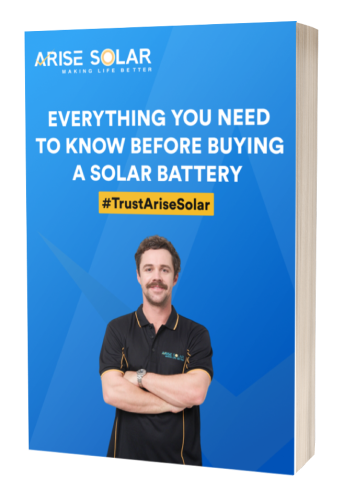The Cheaper Home Batteries Program (from 1 July 2025) allows eligible Australians to receive a rebate based on the usable capacity (in kWh) of a battery installed with or alongside rooftop solar.
By usable capacity we mean the portion of the battery’s nominal capacity that can actually be discharged (i.e. usable output after accounting for inefficiencies, depth of discharge etc.). The rebate is not on nominal capacity directly but on usable capacity for calculation of STCs.
Key parameters and eligibility
| Requirement | Details |
| Battery size | Must be between 5 kWh and 100 kWh nominal, but only the first 50 kWh of usable capacity is eligible for the rebate. |
| Used vs New | Must be a new battery system (not second-hand/refurbished) |
| Solar requirement | Must be installed with an existing or a new rooftop solar PV system. |
| Installer and product approvals | Installer must be SAA-accredited. Battery & inverter must be on Clean Energy Council (CEC) approved product lists. Must comply with AS/NZS standards and electrical safety regulations. |
| VPP capability | On-grid systems must be Virtual Power Plant (VPP) capable at installation. Participation in a VPP is optional. Off-grid rules have special considerations (distance from grid or cost of grid connection). |
| Certification date (“commissioning”) | Even if the battery is physically installed before 1 July 2025, the Certificate of Electrical Compliance must have a date on or after 1 July 2025. That date is critical. |
How the Rebate is Calculated
- Rebate is delivered through Small-scale Technology Certificates (STCs) under the Small-scale Renewable Energy Scheme (SRES).
- The number of STCs awarded depends on:
- Usable capacity (in kWh) up to 50 kWh eligible portion.
- The STC factor for the year — this declines each year from 2025 through 2030.
- The STC factor times the kWh gives number of STCs. Then each STC has a market value (which fluctuates) that determines the Solar Battery Rebate’s dollar amount. Frequently, the installer offers the rebate as an upfront discount (assigning the STCs to them), though homeowners may be able to manage the STCs themselves.
- Example for 2025: 9.3 STCs per usable kWh; approximately A$372 per usable kWh (for the eligible portion) before administrative/market effects.
Step-by-Step Process for Claiming the Rebate
Here is how someone would go through the process:
- Check eligibility
- Confirm the property has (or will have) rooftop solar.
- Ensure the battery system you are considering meets nominal and usable capacity requirements.
- Make sure your battery/inverter are on the approved product lists.
- Use an SAA-accredited installer.
- Get quotes
- Obtain quotes from accredited installers. Quotes should specify usable capacity, nominal capacity, product models, certification timeline, etc.
- Compare what discount/offers installers are giving, since some installers may absorb less/more of the STC value.
- Plan installation timing
- Aim that the Certificate of Electrical Compliance (or its equivalent, “commissioning” or “certification”) is dated on or after 1 July 2025 (or whatever relevant date for your install).
- If battery is physically installed earlier, ensure it is not activated or certified until the date to meet eligibility.
- Installation and paperwork
- The installer installs battery system, ensures technical compliance, safety standards etc.
- Signing off the compliance documents (CoC) after the installation.
- Rebate applied / STCs claimed
- Usually, the installer will handle the STC creation/assignment and apply the discount to your upfront cost.
- Alternatively, homeowner could opt to claim/sell STCs themselves (which may require registering with the Clean Energy Regulator, finding brokers etc.), though this adds complexity.
- Payment / cost reduction
- You pay the net cost (battery + installation minus rebate), as discount is applied up front.
Important Caveats and Things to Watch Out For
- Maximum eligible usable capacity for rebate calculation is capped at the first 50 kWh usable. If your battery is larger, only 50 kWh counts for the rebate calculations.
- STC value fluctuates. Although there are indicative dollar values (e.g. ~$372/kWh in 2025), actual solar battery rebate depends on STC market price and what portion of STC value the installer passes on.
- Certification date matters: Even if you install before the start date, CoC must be dated on or after the qualifying date. Activating or commissioning too early might disqualify you.
- One rebate per meter (electricity meter) or property (with an individual meter). If you have multiple properties with separate meters, each may qualify separately.
- Stacking with state/territory incentives: In many cases you can combine this federal rebate with state rebates or loans, but local rules may vary. Always check with your state/territory government.
Why Choose Arise Solar?
❤️ Origin VPP Preferred Partner ❤️
🇦🇺 One of Australia’s Leading Solar Retailers
❤️ Join Over 63,000 Arise Solar Customers
😀12000+ Positive Reviews
🏆 Product Review Award Winner 2022 – 2025
💰30 Days Price Beat Guarantee
😀1.3 million+ Quality Panels Installed Across Australia
🧓Extra Benefits to Pensioners, Paramedic, Military and Medical personnel
✅ Over a Lifetime, You Could Potentially Save Up To $50,000
✅ CEC Approved Premium Solar Panels
✅ CEC Approved High Performance WIFI Inverters
✅ CEC Approved Batteries
✅ CEC Accredited Installers
✅ $0 Deposit Payment Plans
✅ Install Now Pay Later
✅ Smart Repayment Plans
✅ Save First Repay Later
✅ 30 Years Linear Performance Warranty on Solar Panels
✅ 10 Years Inverter Warranty
✅ 10 Years Workmanship Warranty
✅ Industry Leading Warranties
✅ 10 Years Battery Warranty
✅ 5 Years EV Charger Warranty
T&C Apply*
🌐 Visit us at: https://arisesolar.com.au/solar-battery/
📞 Call us now at: 1300 274 737
✉️ Email: info@arisesolar.com.au





